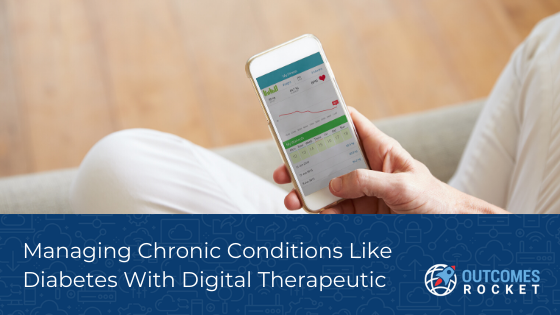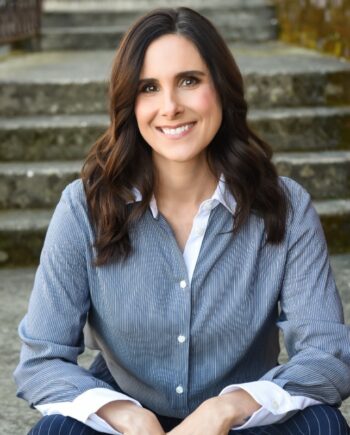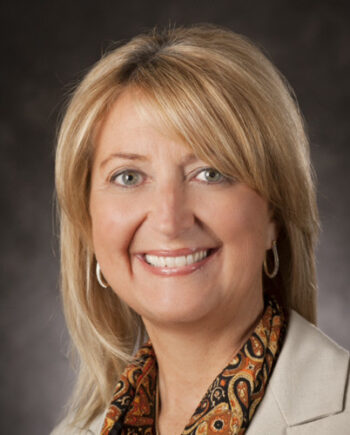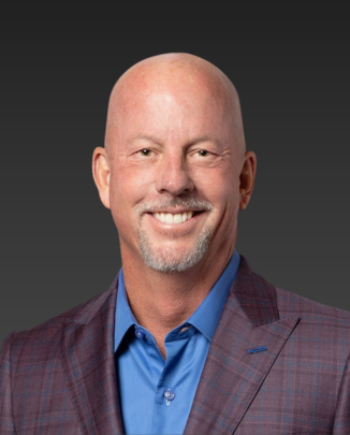
Digital therapeutics may be a relatively new concept but its popularity is snowballing, thanks to the normalized environment of smartphones and the internet. What was once rarely accessible is now within reach with the touch of a button. From your medical history to your prescriptions and doctors appointments, all that info is now in the palm of your hand.
The novel concept of digital therapeutics is great for patients because it means they can actively participate and take control of their medical journey.
For people with chronic diseases like diabetes, digital therapeutics is an excellent choice because it means they can manage their diabetes easier. It is critical for people faced with managing their chronic conditions to have the best insights that are meaningful and actionable.
If you have diabetes or a family member with diabetes, you know what I’m talking about. Having diabetes requires significant lifestyle changes, regular vigilance, and care. It means you have to track your sugar intake, plan your meals carefully, watch not just what you eat but when you eat, manage your medications, get enough sleep and exercise, and the list goes on. Having an app that can track down your daily food intake and glucose level in the blood is definitely helpful in managing diabetes. However, tracking alone is not enough. In order for an app to be effective in helping manage chronic conditions, it has to offer insights and enable the right behaviors.
NHIC claims that there are over 300,000 health apps available in the market1. According to Dr. Josip Car of the Centre for Population Health Sciences at Nanyang Technological University in Singapore, most of the diabetes apps missed the opportunity to improve care and health outcomes. These apps barely delve into the patient’s diabetic problem, most of them barely skimming the surface of the patient’s health problem. This is the problem with most apps. They’re focused on tracking. That’s it.
What diabetes patients could benefit from is an app that can do more than just track glucose levels in the blood.
For Anand Iyer, Chief Strategy Officer at WellDoc, what a patient actually requires is more than just tracking data. According to him, what patients need is to convert the data to information, knowledge, action, and outcomes. What patients want is a key mechanism that if they enter data, a solution should provide coaching and feedback. Insights from our inputs are what we all would like from an app to help with anything we’re struggling with. Iyer knows as he uses WellDoc’s technology to manage his own diabetes.
This elevated and novel approach of digital therapeutics is the core idea behind WellDoc‘s BlueStar digital diabetes products.
BlueStar is a digital therapeutic for type 2 diabetes. It provides real-time feedback messages and insights and connects a user to the care team. This app goes hand in hand with the doctor’s instruction and plan. It delivers an effective solution for diabetes self-care, helping patients manage their diabetes in between doctor visits. What is amazing about these products are they are smartphone apps, but they have the FDA clearance to do much more! Beyond basic features and benefits, the BlueStar lifestyle management technology enables patients to get help when they need it and stay on track with doctor recommendations. To check out the BlueStar technology click HERE.
In our podcast interview, Iyer got to the details of how they built BlueStar. He said, “As a patient, I have to manage multiple things throughout the day, I have to manage my glucose. At the same time, I need to manage all my medications, which could range from just simple orals to complex orals to complex combinations of basal and bolus insulin. I have to manage my diet. In many ways, what I eat is the biggest wildcard in my diabetes. I have to manage my activity. I have to manage my mood, my sleep. And so there is this kind of 360, as I would call it, the 360-degree vectors that affect my wellness. And there is this wee little thing called life that gets in the way every now and then,”
“And of course, what you may do with, say, an after-lunch reading of two hundred fifty-five and what I may do with the same two hundred and fifty-five may necessarily be different. Why? Your medications may be different, or your history may be different, or your co-morbid conditions may be different. “
“So we book this concept of precision that says if I can precisely tell the patient when they enter any parameter from any of those six vectors what to do and tell them over time how they’re doing on that vector, tell them that because it’s a teachable moment. At the same time, if I have violating meals or I ate too many carbs or I skip my medications, you can turn those “negative” events into positive teaching events.
In many ways, what BlueStar does is it provides that real-time, precise, contextual coaching and uniquely online and offline. “BlueStar provides that coaching for the patient both in real-time as well as longitudinally in these multiple dimensions.” The app provides real-time insights whether you’re connected to wifi or not. That’s powerful.
The technology also provides distinct advantages for healthcare providers. “For the healthcare provider, it takes all of that data and it runs it through evidence-based guidelines using A.I. and it suggests to the provider, hey, this is what you should do based on this is where they were. This is where they are. This is what’s changed. And this is what evidence suggests you should do. But you’re the provider to which I think is right for your patient.” Now that data that has been siloed and unused, becomes data that is useful to a patient’s doctor in their own care. That’s the right way to do it.
“When you combine BlueStar with clinical decision support, the outcomes are amazing.”
One of BlueStar’s best successes is it can help reduce hemoglobin A1C. In my interview with Iyer, he stated that BlueStar averages a 2.0 reduction among patients. The impressive result of this study is how BlueStar gained the FDA’s clearance. A 2.0 reduction is no small feat. Anyone looking to improve their own diabetes or that of their employees or health plan members should certain consider it.
This company offers incredible benefits not just to patients and healthcare providers but to payers as well.
In Anand Iyer’s words, he said, “Think of BlueStar as that kind of automated software, scalable, intelligent, adaptable program that supports the patient. Precisely, but that also loops in to the healthcare provider to allow them to get the patient to the right treatment pathway with a little delay in interest as possible.” Many of our skyrocketing costs come from responding too late or not at all. The insights BlueStar provides enable a proactive approach to care management that improves outcomes and lowers costs.
Whether you’re a patient, a health provider, an employer, or a payer, you’ll find an effective partner with BlueStar,
——-
BlueStar is a product of WellDoc, a digital therapeutic company whose mission is to improve patient engagement and health care outcomes by harnessing the nexus of clinical, behavioral, and UX science, along with mobile technologies, to transform the treatment of chronic diseases, globally.
1https://www.dr-hempel-network.com/digital_preventive_healthcare/diabetes-prescription-bluestar-app/
According to the 2020 Centers for Disease Control and Prevention report, roughly 34.2 million Americans have diabetes,...
Read MoreAs a farmer, Rod was used to long days. He worked 18 hours a day, 7 days...
Read MoreWith investors receiving hundreds of pitch decks every year, how do you create a compelling presentation that...
Read More
Brittany Busse Co-Founder, President, and Chief Medical Officer at
ViTelHealth


Stephen Thorne Founder and CEO at
Pacific Dental Services

Keith Carlson Nurse Career Coach